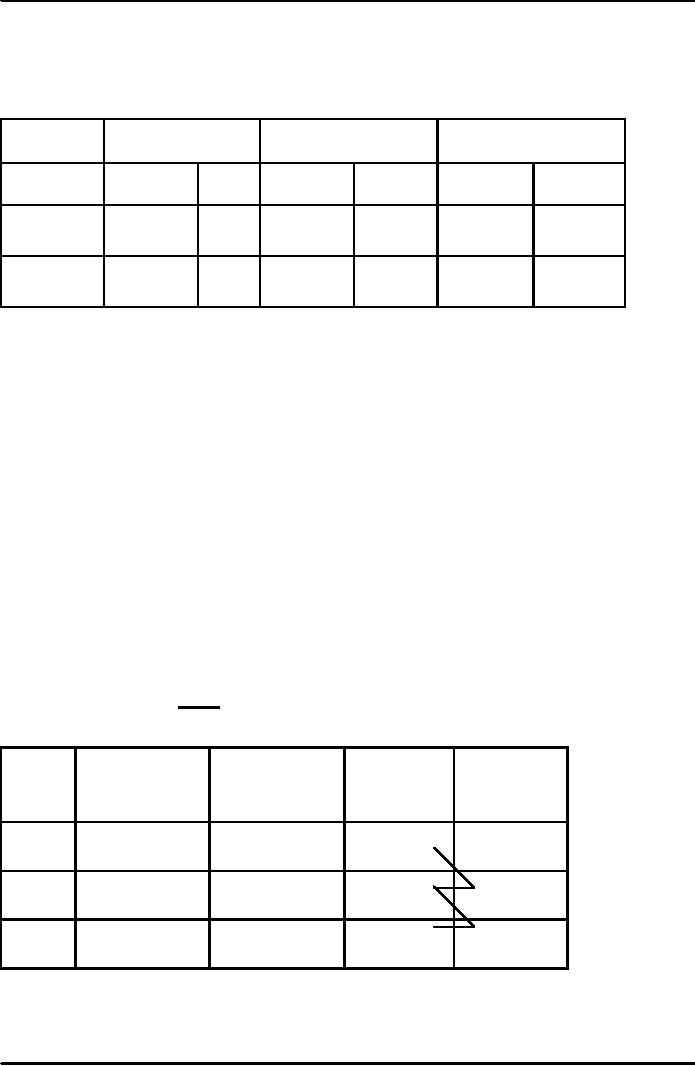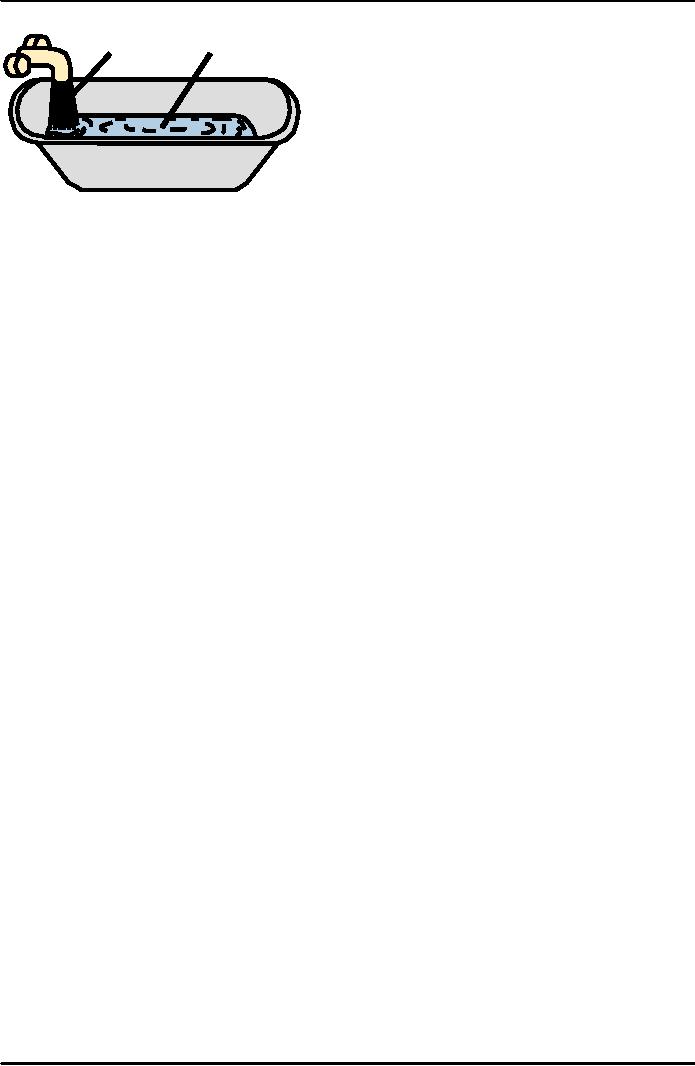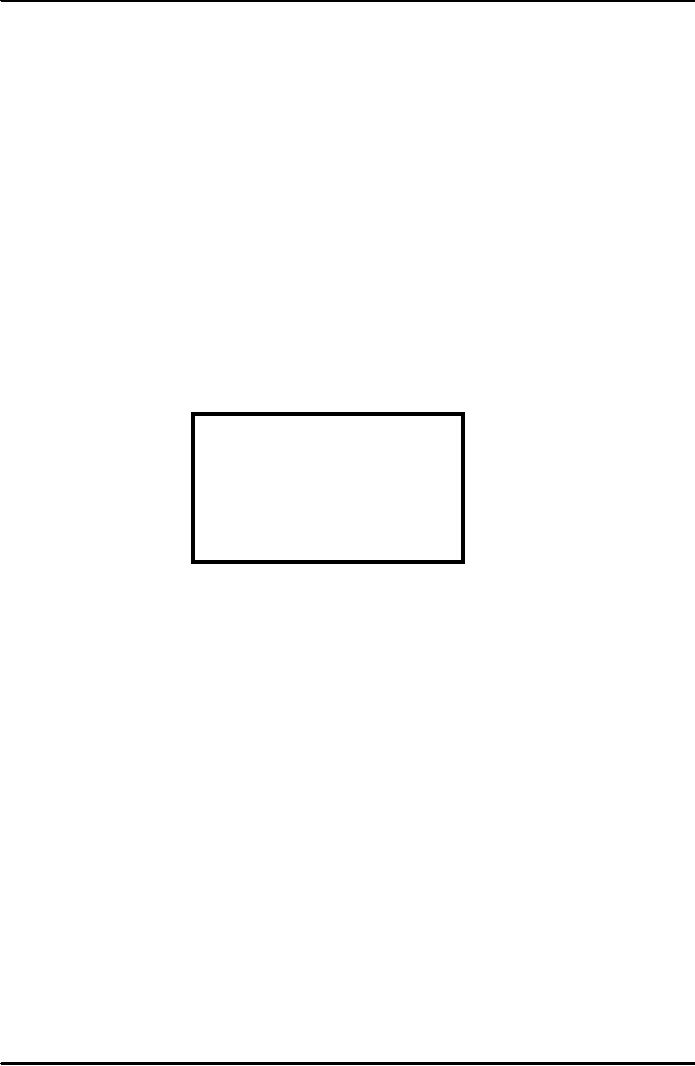 |
THE DATA OF MACROECONOMICS (Continued…):Components of Expenditures |
| << THE DATA OF MACROECONOMICS:Rules for computing GDP |
| THE DATA OF MACROECONOMICS (Continued…):How to construct the CPI >> |

Macroeconomics
ECO 403
VU
LESSON
05
THE DATA OF
MACROECONOMICS (Continued...)
Nominal
vs. Real GDP
2001
2002
2003
P
Q
P
Q
P
Q
good
A
Rs30
900
Rs31
1,000
Rs36
1,050
good
B
Rs100
192
Rs102
200
Rs100
205
Compute
nominal GDP in each
year
�
Compute
real GDP in each year
using 2001 as the base
year.
�
Nominal
GDP
�
multiply
Ps & Qs from same
year
2001:
Rs46, 200 = $30 �
900
+ $100 �
192
2002:
Rs51, 400
2003:
Rs58, 300
�
Real
GDP
multiply
each year's Qs by 2001
Ps
2001:
Rs46, 300
2002:
Rs50,000
2003:
Rs52,000 = $30�1050 +
$100 �
205
GDP
Deflator
The
GDP deflator, also called
the implicit price deflator
for GDP, measures the price
of output
relative
to its price in the base
year. It reflects what's
happening to the overall
level of prices in
the
economy
GDP
Deflator = Nominal
GDP
Real
GDP
GDP
inflation
Nom.
GDP
Real
GDP
deflator
rate
100.0
2001
Rs46,200
Rs46,200
n.a.
102.8
2002
51,400
50,000
2.8%
112.1
2003
58,300
52,000
9.1%
Chain-Weighted
Measures of GDP
�
In
some cases, it is misleading to
use base year prices
that prevailed 10 or 20
years
ago
(i.e. computers and
college). The base year
changes continuously over
time.
12

Macroeconomics
ECO 403
VU
New
chain-weighted measure is better
than the more traditional
measure because it
�
ensures
that prices will not be
too out of date.
Average
prices in 2001and 2002 are
used to measure real growth
from 2001 to 2002.
�
Average
prices in 2002 and 2003
are used to measure real
growth from 2002 to
2003
�
and
so on.
These
growth rates are united to
form a chain that is used to
compare output
between
�
any
two dates.
Components
of Expenditures
Y
= C + I + G + NX
Y
=> Total Demand for
domestic
C
=> Consumption Spending by
Households
I
=> Investment spending by businesses
and households
G
=> Govt. purchases of goods
and services
NX=>
Net exports or net foreign
demand
Consumption
(C)
Definition:
the value of all goods
and services bought by
households. Includes:
�
durable
goods last a
long time
ex:
cars, home appliances
�
non-durable
goods last a
short time
ex:
food, clothing
�
Services
work
done for consumers
ex:
dry cleaning, air
travel.
Investment
(I)
Definition
1: spending on [the factor of
production] capital.
Definition
2: spending on goods bought
for future use.
Includes:
�
Business
Fixed Investment spending on
plant and equipment that
firms will
use
to produce other goods &
services
�
Residential
Fixed Investment spending on
housing units by consumers
and
landlords
�
Inventory
Investment the change in the
value of all firms'
inventories
Investment
vs. Capital
Capital
is one of the factors of
production.
�
At
any given moment, the
economy has a certain
overall stock of
capital.
�
Investment
is spending on new
capital.
Example
(assumes no depreciation):
�
1/1/2002:
economy
has Rs500b worth of
capital
�
during
2002:
investment
= Rs37b
�
1/1/2003:
economy
will have Rs537b worth of
capital
13

Macroeconomics
ECO 403
VU
Stocks
vs. Flows
Flow
Stock
More
examples:
Stock
flow
a
person's wealth
a
person's saving
#
of people with college
degrees
#
of new college
graduates
the
govt. debt
the
govt. budget deficit
What
is Investment?
Ali
buys for himself a house (9
years old).
�
Saleem
built a brand-new
house.*
�
Baber
buys Rs10 million in ABC
stock from someone.
�
An
automobile company sells
Rs100 million in stock and
builds a new car factory
in
�
Lahore.*
Which
one is INVESTMENT included in
GDP? Why?
�
Government
spending (G)
G
includes
all government spending on
goods and services.
�
G
excludes
transfer payments
�
(e.g.
unemployment insurance payments),
because they do not
represent spending on
goods
and services.
Net
exports (NX = EX -
IM)
Definition:
The
value of total exports
(EX) minus
the value of total imports
(IM)
Recall
Y
= C + I + G + NX
Where
Y
= GDP = the value of total
output
C
+ I + G + NX = aggregate
expenditure
A
question for you:
Suppose
a firm
�
produces
Rs10 million worth of final
goods
�
but
only sells Rs9 million
worth.
Does
this violate the expenditure
= output
identity?
Why
output = expenditure
�
Unsold
output goes into
inventory,
and
is counted as "inventory
investment"...
...whether
the inventory buildup was
intentional or not.
14

Macroeconomics
ECO 403
VU
In
effect, we are assuming
that
�
firms
purchase their unsold
output.
GDP:
An important and versatile
concept
We
have now seen that
GDP measures
total
income
total
output
total
expenditure
the
sum of value-added at all
stages
in
the production of final
goods
GNP
vs. GDP
Gross
National Product
(GNP):
�
total
income earned by the
nation's factors of production,
regardless of where
located
Gross
Domestic Product
(GDP):
�
total
income earned by domestically-located
factors of production, regardless
of
nationality.
(GNPGDP)
= (factor payments from
abroad) minus (factor
payments to abroad)
In
Pakistan,
which
would you want
to
be bigger,
GDP
or GNP?
Why?
(GNPGDP)
as a % of GDP for selected
countries, 1997.
USA
0.1%
Bangladesh
3.3
Brazil
-2.0
Canada
-3.2
Chile
-8.8
Ireland
-16.2
Kuwait
20.8
Mexico
-3.2
Saudi
Arabia
3.3
Singapore
4.2
15
Table of Contents:
- INTRODUCTION:COURSE DESCRIPTION, TEN PRINCIPLES OF ECONOMICS
- PRINCIPLE OF MACROECONOMICS:People Face Tradeoffs
- IMPORTANCE OF MACROECONOMICS:Interest rates and rental payments
- THE DATA OF MACROECONOMICS:Rules for computing GDP
- THE DATA OF MACROECONOMICS (Continued…):Components of Expenditures
- THE DATA OF MACROECONOMICS (Continued…):How to construct the CPI
- NATIONAL INCOME: WHERE IT COMES FROM AND WHERE IT GOES
- NATIONAL INCOME: WHERE IT COMES FROM AND WHERE IT GOES (Continued…)
- NATIONAL INCOME: WHERE IT COMES FROM AND WHERE IT GOES (Continued…)
- NATIONAL INCOME: WHERE IT COMES FROM AND WHERE IT GOES (Continued…)
- MONEY AND INFLATION:The Quantity Equation, Inflation and interest rates
- MONEY AND INFLATION (Continued…):Money demand and the nominal interest rate
- MONEY AND INFLATION (Continued…):Costs of expected inflation:
- MONEY AND INFLATION (Continued…):The Classical Dichotomy
- OPEN ECONOMY:Three experiments, The nominal exchange rate
- OPEN ECONOMY (Continued…):The Determinants of the Nominal Exchange Rate
- OPEN ECONOMY (Continued…):A first model of the natural rate
- ISSUES IN UNEMPLOYMENT:Public Policy and Job Search
- ECONOMIC GROWTH:THE SOLOW MODEL, Saving and investment
- ECONOMIC GROWTH (Continued…):The Steady State
- ECONOMIC GROWTH (Continued…):The Golden Rule Capital Stock
- ECONOMIC GROWTH (Continued…):The Golden Rule, Policies to promote growth
- ECONOMIC GROWTH (Continued…):Possible problems with industrial policy
- AGGREGATE DEMAND AND AGGREGATE SUPPLY:When prices are sticky
- AGGREGATE DEMAND AND AGGREGATE SUPPLY (Continued…):
- AGGREGATE DEMAND AND AGGREGATE SUPPLY (Continued…):
- AGGREGATE DEMAND AND AGGREGATE SUPPLY (Continued…)
- AGGREGATE DEMAND AND AGGREGATE SUPPLY (Continued…)
- AGGREGATE DEMAND AND AGGREGATE SUPPLY (Continued…)
- AGGREGATE DEMAND IN THE OPEN ECONOMY:Lessons about fiscal policy
- AGGREGATE DEMAND IN THE OPEN ECONOMY(Continued…):Fixed exchange rates
- AGGREGATE DEMAND IN THE OPEN ECONOMY (Continued…):Why income might not rise
- AGGREGATE SUPPLY:The sticky-price model
- AGGREGATE SUPPLY (Continued…):Deriving the Phillips Curve from SRAS
- GOVERNMENT DEBT:Permanent Debt, Floating Debt, Unfunded Debts
- GOVERNMENT DEBT (Continued…):Starting with too little capital,
- CONSUMPTION:Secular Stagnation and Simon Kuznets
- CONSUMPTION (Continued…):Consumer Preferences, Constraints on Borrowings
- CONSUMPTION (Continued…):The Life-cycle Consumption Function
- INVESTMENT:The Rental Price of Capital, The Cost of Capital
- INVESTMENT (Continued…):The Determinants of Investment
- INVESTMENT (Continued…):Financing Constraints, Residential Investment
- INVESTMENT (Continued…):Inventories and the Real Interest Rate
- MONEY:Money Supply, Fractional Reserve Banking,
- MONEY (Continued…):Three Instruments of Money Supply, Money Demand